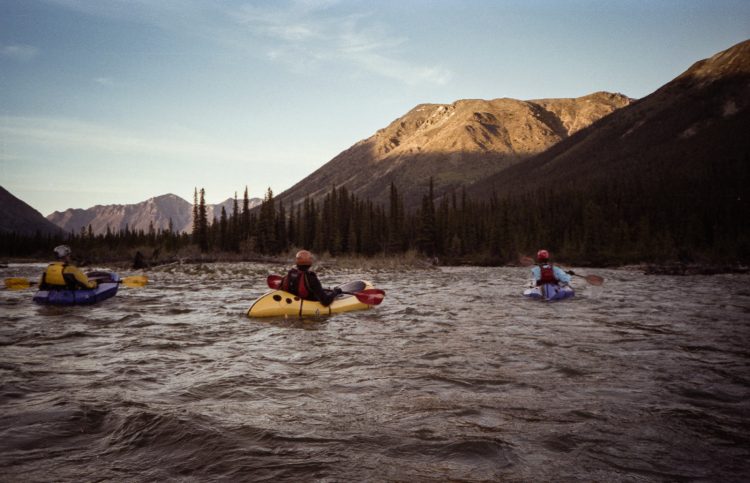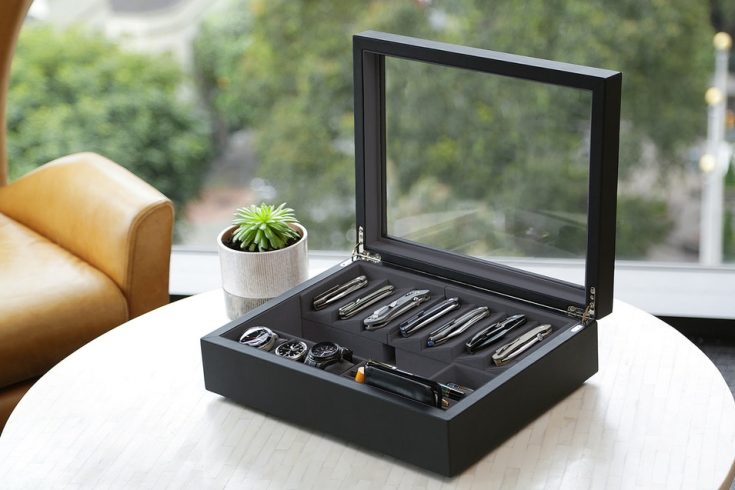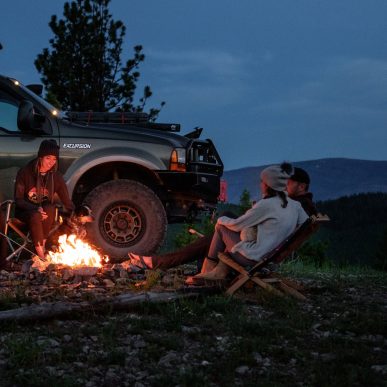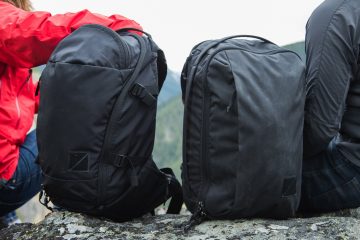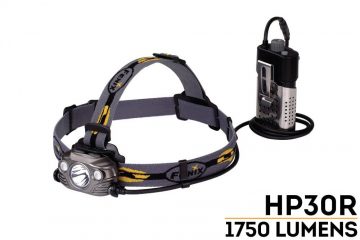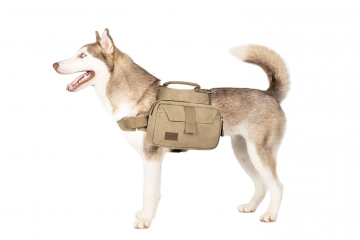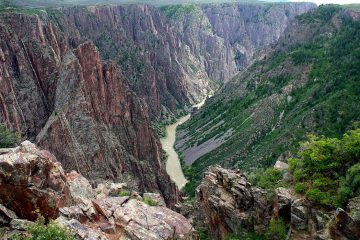Feature Image: Anthony DeLorenzo via Wikimedia Commons
Packrafting is the hot new thing in outdoor adventures.
While people have been packrafting recreationally for decades, it’s always been a little under the radar…and has only just begun to explode in popularity in the last few years. We expect it to continue growing at a pretty quick clip over the next few years, more and more brands like Kokopelli and Alpacka release more and more raft models and choices.
But once you have your raft, your helmet and your foldable paddle – are you really all set to go? Or is there some essential gear you’re missing – gear that you absolutely need in order to suit up and head downstream safely and comfortably?
In this quick guide, we’ll take an in-depth look at all essential gear that you need to paddle comfortably and safely downstream – whether just for one day, or for an entire week-long odyssey into uncharted backcountry.
Contents
A Good Packrafting Paddle
The first thing you need to look for once you’ve chosen your packraft? A reliable paddle.
We’ve covered this once before. Any packrafting paddle should be sturdy, strong enough to propel you forward and the right length for your raft and your arms. It should also be light and foldable for when you need to pack up and move over terra firma.
4-piece paddles are generally considered the best all-around paddle design for packrafting. They pack into the smallest size possible for carrying on your back when portaging. Most packrafters prefer the versatility and powerful stroke of a high-angle paddle over the smoother, longer stroke of a low-angle paddle – as well as the increased nimbleness they offer when navigating whitewater.
One commonly recommend packrafting paddle is the Aqua-Bound Manta Ray. This 4-piece offers carbon fiber construction, wide high-angle paddling, and clocks in at lightweight 2 pounds. (They are Made in America, too).
[amazon box=”B01CIVAF8A” template=”widget-vertical”]
A Sturdy Packrafting Helmet
A good helmet is necessary to protect your head from rocks and impacts in case of spills and wipeouts.
You can read our rundown of the best packrafting helmets of the year. But to briefly recap: look for a helmet with the right combination of light weight, shock-absorption, and comfortable suspension. Breathability is nice -but secondary to protection and suspension.
The best helmet materials are composite plastic, synthetic, carbon fiber and fiberglass. The more you spend, the lighter you can go without compromising durability and shock-absorption. But spending big bucks isn’t necessary, either. Lining is usually made from EPS or EVA foam – as on traditional bike and sport helmets. EPP is a higher-end foam, more expensive than EPS or EVA, that offers the best impact protection and shock absorption.
A very common choice is the WRSI Trident, with its carbon-composite outer shell, PU subshell, and EVO foam liner. If you can’t shell out that much on a shell, try the NRS Chaos; durable and comfortable ABS with rock-solid, customizable BOA retention straps that work on almost any head.
[amazon box=”B01N9YN2DC” template=”widget-vertical”]
A Warm Drysuit
You might be able to get away without one on shorter trips in hotter climates. But if you’re doing any kind of packrafting in cold water or cold climates (think Alaska), a drysuit is essential.
It’ll keep you dry and keep you warm in case of splashes, spills and all-around exposure to the elements…and could literally save your life any time of year.
Temperatures at high altitudes and the desert can drop dramatically in the evening. It might be okay to drip dry on a sunny 85-degree day…but you need to stay dry if you want to stay alive the rest of the year.
Full drysuits can be expensive. But you can grab decent budget options (that don’t sacrifice quality) from brands like Kokotat for a few hundred dollars.
If you’re willing to spend upwards of $600-$1000, you’ll have your pick of high-end 4-season wet suits for keeping alive in bone-chilling weather.
[amazon box=”B07963YJ3T” template=”table” items=””] [amazon box=”B006LJMZDY” template=”table” items=””] [amazon box=”B01M75CAQX” template=”table” items=””]Personal Flotation Device (PFD) AKA A Life Jacket
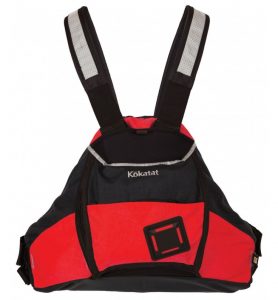
Many people just don’t think that personal flotation devices are necessary. We’re here to disagree. Look at this piece of gear the way you would look at getting a drysuit; you may not need it in shallow, calm waters – but it may literally save your life when your raft flips in rapids…..or the water temperature is just deadly cold.
You shouldn’t be afraid to invest in quality safety gear, but that doesn’t mean your PFD has to be expensive, either. You can grab this basic one from Stolhquist without breaking the wallet. It’s comfortable, light and breathable.
Slightly expensive is the Kokotat Orbit Tour PFD, which packs high-end quality and materials (500D Cordura and 200D nylon) and a minimalist profile; one that will last a lifetime and won’t get in your way.
Be sure to grab a PFD that is Coast-Guard approved and flotation-rated. For most packrafting, a packraft of at least Class III will work, but Class II or even Class I are much more ideal.
[amazon box=”B00GSN64SK” template=”widget-vertical”][amazon box=”B00HRXXVSQ” template=”widget-vertical”]Waterproof / Gore-Tex Socks
To complement your drysuit (for staying warm and safe), you should reach for some waterproof socks. need good Gore-Tex socks to keep your feet toasty and dry year-round. Nothing ruins a great experience faster than a pair of sopping wet socks…
These Rocky Gore-Tex socks have durable, abrasion-resistant outer layers for wear resistance and protection, with a waterproof and breathable Gore-Tex membrane.
Another good option are SEALSKINZ. These 100% waterproof socks combine merino wool and acrylic for soft, stretchy and moisture-wicking comfort. And….they come all the way up to your knee, providing unbeatable protection that’s still low profile and unobtrusive.
[amazon box=”B01K517H9U” template=”widget-vertical”][amazon box=”B00DBLN2LO” template=”widget-vertical”]Dry Bags / Waterproof Stuff Sacks
If you need a drysuit to keep yourself from getting soaked through on the water…your gear needs one as well. Waterproof dry bags for stuffing in essentials that simply CAN’T get wet should be an unforgettable part of your kit.
There’s no shortage of good dry bags and stuff sacks out there to pick, but we really like those from Adventure Lion, which come in sizes from 5L to 40L. And if you’re interested in heavy-duty waterproof packing for ALL your gear, you could also look at waterproof duffels like the Yeti Panga. Sea to Summit also makes some excellent choices.
[amazon box=”” template=”widget-vertical”][amazon box=”” template=”widget-vertical”]All The Usual Camping Gear
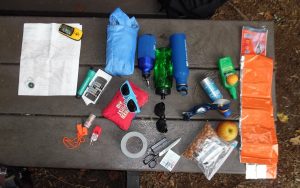
When sorting through paddles and drysuits, it’s easy to forget that packrafting is more than just rafting. It’s backpacking and camping, too – and it’s important you have all the same camping and survival gear needed for any backcountry adventure.
Preparing for one starts with an excellent, lightweight backpack, probably 30 to 50 liters in size. (Remember: Packing light is always better, even when you’ve got a raft to help carry your gear).
It also includes the right footwear. The predominant school of thought on the Internet is to stick with traditional padded, waterproof hiking boots, so you can overland with all that gear most comfortably.
But some folks prefer the simplicity and waterproofness of traditional rubber boots. Rubber boots will be welcome when you’re jumping in and out your raft in knee-deep water and mud all day long…but they just aren’t as comfortable (or breathable) when hiking on land with a pack on your feet.
Tent
Opt for a tent appropriate for the time of year you’re venturing out in – whether that’s a 3-season or a 4-season. While it may be tempting to go with a heavier one than usual – as you’re hauling it in a raft – it’s better to stick with a lighter, more compact one you are comfortable carrying in your pack over land.
Sleeping Bag + Pad
Same rules as always apply for choosing your sleeping bag and sleeping pad. Choose something you’re comfortable in, that’s rated to the conditions you’ll be sleeping in, and that can be easily packed and carried.
